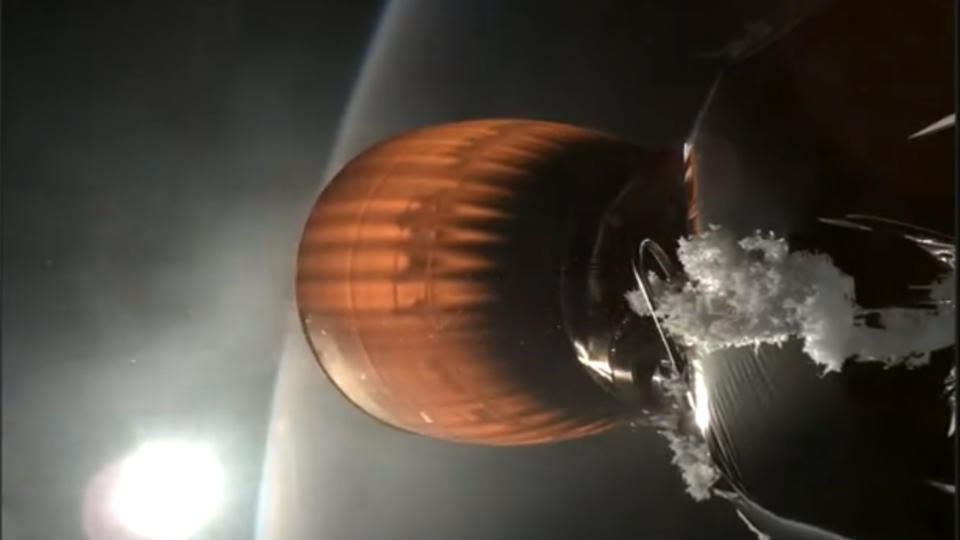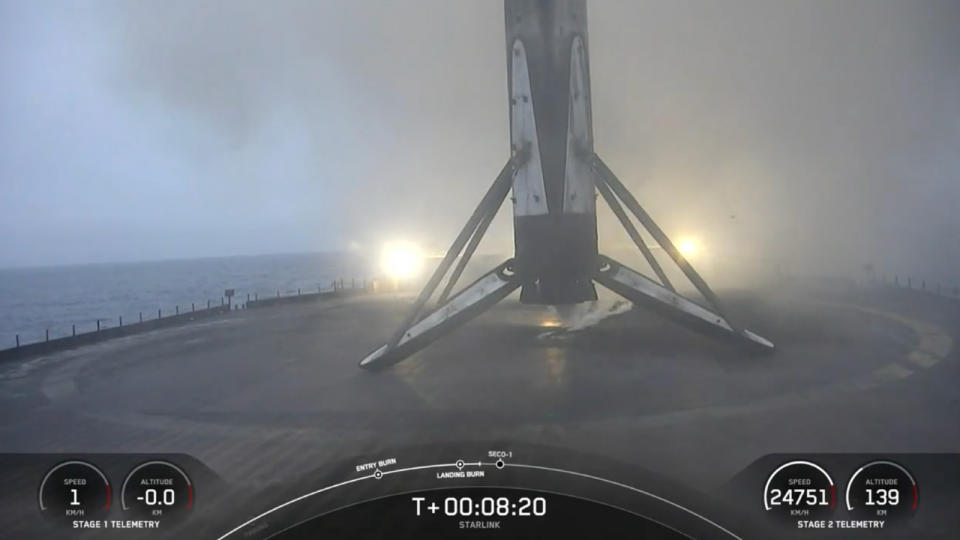Twenty Starlink satellites were prematurely released during a failed SpaceX rocket launch last week — and now, observations have confirmed they all burned up in the upper atmosphere after falling back to Earth. Experts are currently investigating what happened, and the rockets responsible will remain grounded until this investigation is concluded.
On July 11, SpaceX launched a Falcon 9 rocket from the Vandenberg Space Force Base in California at 10:35 p.m. ET, one day later than originally planned. The launch initially went as expected, and the rocket’s first stage successfully detached from the satellite-laden second stage, before landing on a drone ship in the Pacific Ocean. However, the second stage then failed to complete its second burn due to a liquid oxygen leak, leaving it stranded in a low orbit around Earth. (It is currently unclear if the leak caused the delayed launch.)
The rocket’s second stage was still able to release its payload. However, the satellites became stuck in an elliptical orbit around our planet, with a minimum altitude of 84 miles (135 kilometers) — around half the height at which they normally operate. At this elevation, atmospheric drag slowed the satellites down, and they began to fall back to Earth by around 3 miles (5 km) every completed orbit, SpaceX representatives wrote in a statement on July 11.
“At this level of drag, our maximum available thrust is unlikely to be enough to successfully raise the satellites,” SpaceX representatives wrote. “As such, the satellites will re-enter Earth’s atmosphere and fully demise.”
The company gained control of most of the satellites and ordered them to perform burns at their maximum thrust, known as “warp 9,” in a last-ditch attempt to regain altitude, Space News reported. But this was not enough to save the satellites.

Subsequent observations from Jonathan McDowell, an astrophysicist at Harvard University, have since confirmed that all 20 satellites met a fiery death on July 12, Spaceweather.com reported.
The re-entering spacecraft did “not pose a threat to other satellites in orbit or to public safety,” SpaceX representatives wrote. And so far, there have been no reports of the spacecraft reaching Earth’s surface, according to Spaceweather.com.
This was the first Falcon 9 launch failure since 2016 and the biggest single loss of Starlink satellites since February 2022, when a geomagnetic storm knocked 40 satellites from the sky shortly after the satellites were put into Earth orbit.

SpaceX is now investigating what happened, under the supervision of the U.S. Federal Aviation Administration (FAA), Live Science’s sister site Space.com reported. The company will not be able to launch any more Falcon 9 rockets until this investigation is complete.
RELATED STORIES
—SpaceX rockets keep tearing blood-red ‘atmospheric holes’ in the sky, and scientists are concerned
—Chinese scientists call for plan to destroy Elon Musk’s Starlink satellites
SpaceX’s interplanetary Starship rocket was similarly grounded by the FAA in 2023 after it exploded minutes after take-off during its first test flight on April 20 last year.
It is currently unclear how long Falcon 9 rockets will be grounded for. But one unnamed industry expert told Space News that the spacecraft could be grounded for months, which — if correct — would force a major reshuffle of the company’s launch schedule for the rest of the year.
EMEA Tribune is not involved in this news article, it is taken from our partners and or from the News Agencies. Copyright and Credit go to the News Agencies, email news@emeatribune.com Follow our WhatsApp verified Channel





